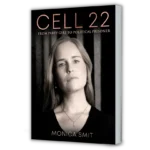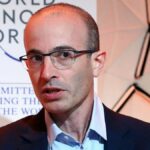Cloning and Stem Cell Truths
The debate over cloning and stem cell research is vitally important because the focal point of these new biotechnologies is human life. How we are to regard the concepts of personhood and humanity are not new discussions, but they take on new and more urgent status in the biotech age. We now have the power to make life, fake life and take life.
Thus it is imperative that we have a clear understanding of how human beings fare in cloning, stem cell research and other new technologies. The stakes are indeed high, but so too are the levels of misunderstanding and misinformation. Thus we need to get back to basics on some core issues here.
Eric Pavlat agrees, although it may seem strange that he does. He is an American Democrat, and was for many years pro-choice. But he has come to see that human life is indeed important, and we need to be very careful in how we proceed with the biosciences.
He has penned an article for the September 2006 issue of Crisis, outlining some of the myths that have developed concerning cloning and embryo research. His discussion is worth examining. He begins,
“Because embryonic stem cell research (ESCR) doesn’t have the starkness of other pro-life issues, some people may not realize what an urgent issue it is. My wife, a former AIDS and cancer-research technician at Johns Hopkins University, put it simply: When it comes to ESCR, ‘the problem isn’t the cells, it’s the person you have to kill to get the cells.’ And that’s what’s wrong with embryonic stem cell research as it stands today: It’s fatal. This research doesn’t use human beings as guinea pigs, but rather as clay pigeons.”
Pavlat discusses how ESCR is very much dependent on human cloning: “Without human cloning, nearly all ESCR treatments will prove extremely difficult due to the risk of tissue rejection (e.g., the patient may need to take immunosuppressant drugs for the rest of his or her life).” Adult stem cell research (ASCR) does not have this problem.
Thus, for example, “tissue-rejection issues exclude ESCR and human cloning from being candidates for the successful treatment of juvenile diabetes. On the other hand, the recently developed Edmonton protocol uses islet cells (from the pancreas) to treat juvenile diabetes. The most recent data indicate that 80 percent of those patients treated require no insulin shots a full year after the treatment.”
While ASCR “has already successfully treated or cured more than 70 diseases and conditions,” ESCs “have neither cured nor treated any diseases or medical conditions in human beings to date. In order to avoid tissue rejection with ESCs, human cloning would be necessary. Somatic cell nuclear transfer is an eight-step process, meaning that there are more opportunities for error to be introduced into the process than with ASCs – not to mention that human cloning has never yet been successful, nor is likely to be successful without literally dozens of donated eggs per attempt.”
And there are other problems with ASCs. For example, “James Sherley, associate professor of biological engineering at MIT, points out that ESCs are not able to survive the body’s cell turnover (where older cells are replaced with new ones), whereas ASCs are made to survive the process.”
And of course the human embryo has to be destroyed before stem cells can be extracted. But critics will seek to argue that stem cells are not human, so we should still give them a go. Replies Pavlat, “While ESCR supporters may dance around the question of where life actually begins, Professor Sherley puts it bluntly: ‘There is no credible scientific debate on whether human embryos are alive and human.’ Embryology textbooks universally agree: ‘The development of a human begins with conception’ ( Langman’s Medical Embryology ); ‘the time of fertilization represents the starting point in the life history, or ontogeny, of the individual’ ( Patten’s Foundations of Embryology ); ‘the [zygote] results from the union of an oocyte [egg cell] and a sperm during fertilization. A zygote is the beginning of a new human being’ ( The Developing Human: Clinically Oriented Embryology ).”
But if ASCR is so superior to ESCR, why is the latter being so strenuously promoted? Good question. Turns out, there are financial considerations at play here: “While scientists are indeed fascinated by the potential of ESCR, there are also huge financial possibilities at stake. Research advocate and biotech writer James P. Kelly of the Seoul Times explained one of the reasons why he no longer supports ESCR: ‘I overlooked the fact that the scientists and industries urging us to travel the longest, most problem-filled paths to treatments and cures depend on the continued existence of disability and disease for their funding, profits, careers, and existence’.”
“A Web site sponsored by the Human Genome Project points out that, since ESCR involves the creation of cell lines, those lines ‘are technically patentable. . . . Patents could . . . discourage product development because of high royalty costs owed to all patent owners of that sequence; these are costs that will likely be passed on to the consumer.’ On the other hand, ASCR involves techniques that can be repeated on different patients. Techniques are non-patentable – you can only patent a product or a design – so there is no potential for price-gouging with ASCR.”
He continues, “If ASCR and ESCR both result in treatments and cures, but only ESCR results in patents and profits, which would big business likely support? This is an example of the health-care industry’s obsession with profits over patients.”
After looking at other considerations, such as how women are often exploited by these new biotechnologies, Pavlat concludes with a question: “Who is a person? Our answer will say much about society, and just where it is heading.”
http://www.crisismagazine.com/september2006/pavlat.htm
[968 words]



















